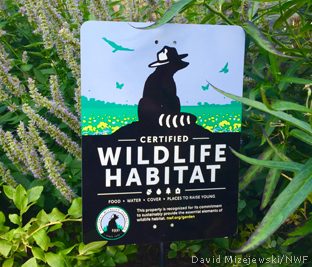 Wells Branch Wild:
Wells Branch Wild:
A Community Wildlife Habitat
by Jill Douglass
What do the United States Department of Agriculture, Texas A&M Forest Service, Texas Fish and Game, the Xerces Society, and the National Wildlife Federation all agree on? Leaving the leaves!! All of these organizations support wildlife, and they all promote using the fallen leaves in your yards as cover, food, and nurseries for animals. With eight trees in my backyard, I do have trouble finding a spot for all those leaves. The leaves on the gravel paths get blown or raked into the flower/landscape beds. Some get piled into a small compost pile. The ones on the grass get mowed and left in place (though shredded leaves will not provide the same cover as leaving them whole). My lawn is small so the mown leaves are few. In the end, a few bags of leaves do make it to the curb to contribute to our community composting. Leaving the leaves provides two basic benefits. First, the leaves provide food, cover, and a place for animals to raise their young. Butterflies, bumble bees, lightning bugs, moths, frogs, and turtles are just a few examples of animals that rely on leaf litter. Without the leaves providing a habitat for insects, many birds will not have food. Second, leaf mulch provides valuable organic matter to your garden. No need to buy mulch if you are using your leaves.
To learn more about how to support wildlife, follow Wells Branch Wild on Facebook and Instagram (both can be found by searching Wells Branch Wild). To date, we have 57 certified wildlife habitats in Wells Branch. We are one-quarter of the way to our goal of 200. If you are interested in certifying or have questions on how to proceed, visit www.nwf.org/Certify or message us on Facebook or come to our presentation on February 15. We would love to help.
Wells Branch Wild’s mission is to lead, inspire, and engage our community in stewardship of a healthy and sustainable ecosystem.